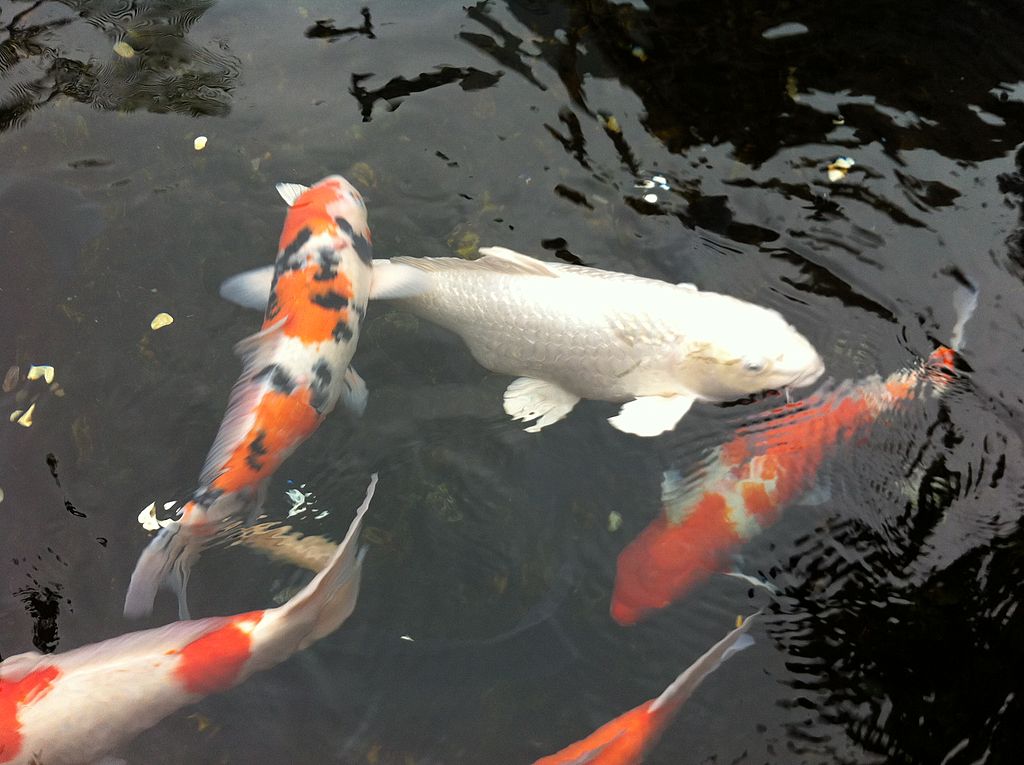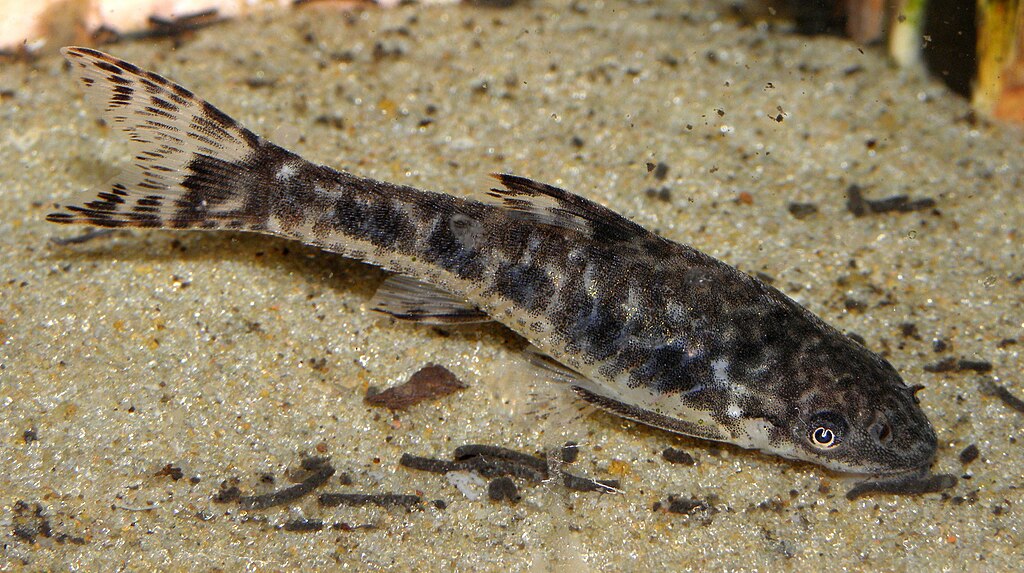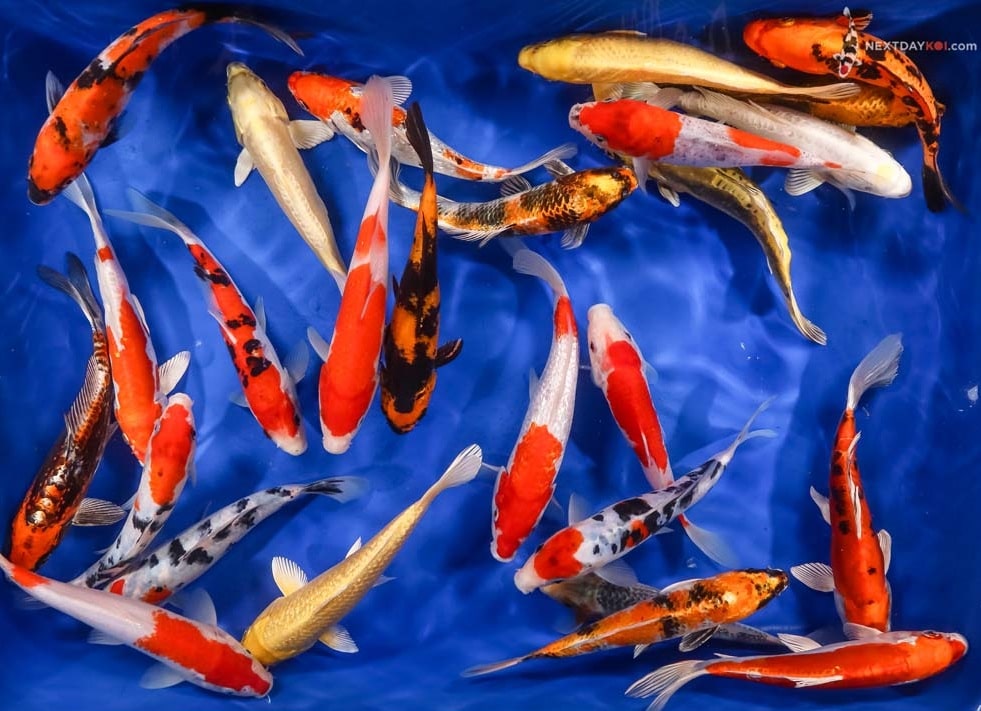10 Best Pond Algae Eaters for a Clean & Clear Pond
Pond Academy is reader-supported. Buying through links on our site may earn us an affiliate commission. As an Amazon Associate I earn from qualifying purchases.
An overabundance of algae is the bane of all pond enthusiasts.
But there are ways you can naturally control the growth of algae in your pond!
Pond algae eaters, along with other natural methods, are a great way to keep your algae levels in check and prevent those dreaded blooms.
So, what eats algae in a pond?
Let's look at 10 of the best pond algae eaters and answer some common questions to help you keep your pond algae under control.
10 Best Pond Algae Eaters
1) Siamese Algae Eater

This freshwater carp is a voracious eater and not too picky regarding diet.
![]() Did you know...
Did you know...
Unlike other algae-eating fish, Siamese algae eaters will consume everything from green algae to pond scum, and even red algae that few other pond cleaning fish will touch.
Though small for a carp species (they grow to roughly half a foot long), Siamese algae eaters are frisky swimmers who do best in larger environments. Their enterprising nature and large appetites may make them poor neighbors of smaller fish like minnows but are great companions of most common pond fish, like goldfish and koi.
Siamese algae eaters can live up to ten years but do not thrive in temperatures below 70 degrees Fahrenheit. Nor do they winter in ponds; they must be transferred indoors when the weather cools down.
2) Common Pleco

The Siamese algae eater may punch above its weight regarding algae control, but the common plecostomus is downright voracious.
Also known as suckermouth catfish, plecos scour a pond’s underwater surfaces in search of small crustaceans, invertebrates, and above all, algae. Famous for their ability to control algae in aquariums, plecos are just as effective in ponds, especially against the kinds of filamentous algae responsible for the ugliest, most fish-stressing blooms.
A common pleco can grow to two feet long when living in a healthy pond with plenty of food. Both their size and the nature of their diet mean that these algae eating bottom feeders should not be confined to small ponds: a volume of at least 1,000 gallons is best for a single fish. Plecos are famously slow-moving, easygoing and get along well with other pond fish, particularly those with significantly different diets and social habits.
They are largely solitary, though, and prefer not to compete with other plecos for large stretches of territory: if more than one pleco is added to a pond, each should have at least 1,000 gallons to call its own.
Plecos are somewhat hardier than Siamese algae eaters but should still be brought indoors if the temperature threatens to drop below 50 degrees Fahrenheit. Be sure to regularly check the temperature of your pond with a pond thermometer to ensure your fish don't endure too cold of temps.
3) Pond Loach

Unlike many other algae eaters, pond loaches prefer cooler temperatures: in some areas, they’re actually known as weather loaches.
Because they do not depend on dramatic summertime algae blooms, pond loaches have opportunistic appetites, eating a wide variety of plant life and any insects that come their way. Still, algae often form the basis of their diet.
Loaches are sociable fish that travel in small groups; this helps offset the fact that a given loach, which may grow to a foot long, eats fewer algae than some other species. They may not get along with other highly social fish but make good neighbors to goldfish and koi.
Their hardiness and resourcefulness make them a popular choice for first-time pond owners. Unlike many other algae-eaters, pond loaches can survive temperatures near freezing. Still, they should be brought inside when temperatures drop below 40 degrees Fahrenheit. In areas where the temperature rarely drops below 40 degrees, a pond heater may be enough to keep loaches active and happy throughout the year.
4) Koi Fish & Goldfish

Many pond owners assume koi and goldfish will be part of the mix. Thankfully, they eat algae; less helpfully, they eat just about anything else.
Algae only form an important part of their diet during the winter, when far fewer alternatives are available and their near-dormancy demands far less nutrition. At the same time, these species are among the few that can remain in your pond throughout most winters: as long as a bit of the pond’s surface remains free of ice, koi and most goldfish overwinter nicely.
If the prime benefit of algae-eating fish is their ability to constantly keep harmful algae in check, the prime algae-related benefit of koi and goldfish is their ability to help other species, not to put a big dent in algae levels all on their own. If koi and goldfish are to be important species in your pond, you should choose complementary algae-eaters carefully. Plecos, for example, are docile enough to get along well with koi but may damage any smaller goldfish that accidentally swim their way.
5) Grass Carp

As its name implies, grass carp feed mostly on plant life, especially chara or muskgrass. This form of algae resembles a pond plant and conveys some of the same benefits, including water filtration and habitat for small fish and invertebrates. But it grows so aggressively that in certain conditions, it can overwhelm large parts of a pond. Along with chara, grass carp especially like elodea and duckweed, two oxygenating plants that can easily outgrow their usefulness and become pests.
Grass carp are larger than most other species, and adults average 55 pounds. Their size makes grass carp appropriate only for large ponds. They are also fantastic breeders, and in the 50 years since their introduction to the US have become a problematic invasive species in many waterways. Because of this, only triploid grass carp, those possessing an extra set of chromosomes that renders them sterile, are advisable or indeed legal for use in most North American jurisdictions.
6) Mollies & Guppies

While grass carp excel at patrolling large ponds and lakes, mollies and guppies are perfect for small ponds, especially in warm climates.
Like many other popular pond fish, mollies and guppies prefer a varied diet, so one tiny guppy won’t do much to blunt a threatening bloom of algae. But they reproduce so quickly that before long, even a small initial group of these small fish can play a significant role in suppressing excess algae growth (along with representing a food source for larger species).
Because of their size, mollies and guppies prefer soft green algae—the most generally beneficial type—to the more complex types that form pond scum. As a bonus, they also love to eat insect eggs and larvae, which helps you get rid of mosquitoes from your pond.
These are not hardy fish. Guppies thrive in temperatures above 55 degrees Fahrenheit, and mollies simply hate cool temperatures, preferring water above 75 degrees. Wintering over is out of the question, so they must be brought inside during colder months or sold to pet stores.
7) Otocinclus Catfish

A much smaller cousin of the common pleco, the two-inch-long oto is sometimes called the dwarf suckermouth catfish. It shares some characteristics with plecos, including its appetite for algae along the pond’s floor. Because of their size, otos tend to prefer shallow water, which happens to be a prime breeding ground for problematic types of algae.
In the right conditions, otos can be a terrific first line of defense against excessive algae growth. They thrive in small ponds with plenty of littoral area (shallow area near the pond's edge) relative to their size and few, if any, large carnivorous fish species. When presented with plenty of shallows and non-threatening neighbors, otos can curb algae growth even in hard-to-reach places that plecos pass by and without disturbing surrounding plants. In larger ponds, though, their size and methodical nature make them easy prey.
8) Chinese High-Fin Banded Shark

First, some disappointing news: this isn’t really a shark, just a fish with a prominent dorsal fin. On the other hand, its other common name, the freshwater batfish, is nearly as striking.
Whatever you call them, batfish are bottom feeders like plecos and otos and prefer algae to other foods. Like those other algae-eaters, batfish grow slowly, though they wind up much larger than even plecos: it is not uncommon for well-fed batfish to exceed four feet in length.
Batfish are sociable, preferring to live in small groups, and coexist easily with smaller species (though especially small fish like guppies and young goldfish may be accidentally injured if they wander into a feeding batfish’s path). Their size and preference for company mean that batfish are only happy in larger ponds.
They also prefer cooler temperatures. Like most other catfish, you can overwinter batfish, provided that some surface water remains unfrozen.
9) Flying Fox

The flying fox fish, not to be confused with the flying fox bat, is a small but notoriously ravenous algae-eating fish for ponds and aquariums that typically reaches around four to six inches in length. Like some of the other pond fish that eat algae, they have high nutrient needs and may also eat any pond plants that are present.
Flying foxes are spirited freshwater algae eaters that get along well with other species, though the feeling is sometimes not mutual. Their friskiness often leads them to compete aggressively with others of their kind. They prefer smaller ponds and warmer temperatures, preferably above 70 degrees Fahrenheit.
10) Black Japanese Trapdoor Pond Snails

Snails can be tricky propositions for ponds. On the one hand, they scrub surfaces of unwanted algae, unconsumed food, and other nuisances. On the other hand, they’re difficult to collect when cold weather comes, and during warmer months, they lay tremendous clutches of eggs, which soon become problematic.
But not these algae eating pond snails! Black Japanese trapdoor snails overwinter well, and instead of laying hundreds of eggs at once, they give birth to a handful of live young each spring. And like other pond snails, they’re extremely effective at curtailing algae production before it becomes a problem.
Get Our Best Pond Tips Sent to Your Inbox for Free!
Join thousands of others and learn from our decades of pond building and maintenance experience! Your pond will thank you!
By subscribing you agree to receive emails from PondAcademy.com. We will always respect your privacy and you can unsubscribe at any time.
Do I Need Algae Eaters for My Pond?
Algae have earned a bad reputation among pond owners. And for a good reason: algae grow so rapidly, especially in the summer months, that they can quickly deplete a pond’s reserves of nutrients and dissolved oxygen. But algae aren’t just nuisances: they play a complex role in your pond’s health and require thoughtful management.
Some algae earn that bad reputation in all circumstances. Filamentous algae such as Spirogyra have no important role in a healthy pond’s food chain and are often the first organisms to take advantage of increased levels of nutrients such as phosphates and nitrates. This leg up on more beneficial forms of algae often causes filamentous algae to bloom aggressively in warmer weather when it earns its more common name: pond scum.
But some algae are crucial to your pond’s health. Single-celled green algae, the beneficial form of phytoplankton, are the first link of a pond’s food chain and the foundation of its entire ecosystem.
![]() Did you know...
Did you know...
Phytoplankton help oxygenate your pond; in fact, phytoplankton produces an estimated 80% of the world’s oxygen.
The challenge, then, isn’t to eliminate all algae. It’s to suppress the growth of harmful organisms like filamentous and blue-green algae (phytoplankton that’s actually a chlorophyll-producing bacterium) and promote healthy levels of green phytoplankton.
Targeted means of pond algae control can be time-intensive and costly. Barley straw, floated in small sachets or added in pellet or extract form, is a traditional means of absorbing excess nutrients before they can drive algae blooms. Overdone, they can also deprive plants and fish of those same nutrients.
UV clarifiers kill algae of all kinds by inhibiting their ability to reproduce; they work best in smaller ponds, where like barley straw, they should be used carefully.
Some pond owners even vacuum up pond scum.
But the best ways to manage algae growth may be the most natural. Careful attention to groundwater and runoff can help mitigate the threat of excessive phosphates and nitrates. The right selection of pond plants, especially those that rise above the water’s surface, can circumscribe algae’s growth by shading large patches of the pond’s floor. And the right selection of the aforementioned pond algae eaters can keep algae levels in check, limiting the extent of their summertime blooms.
None of these passive approaches will completely eliminate the presence of harmful algae, and together they may not entirely prevent annual blooms. But by lowering the pond’s baseline levels of harmful algae, they can significantly limit the ability of harmful algae to do their worst while also encouraging beneficial algae to flourish.
Which Is the Best Algae Eater Fish for a Pond?
To find the best algae eating fish for a pond, consider the pond’s size, makeup, and climate.
For small ponds, traditional fish such as koi and guppies that eat varied diets are usually enough to keep algae levels in check.
Algae may still be prone to summertime blooms, but these should be less extensive and shorter-lived than they otherwise would be, and the right balance of algae-eaters should not be enough to tip the pond’s balance into dangerous territory. Larger ponds, especially those without significant growth of shade-casting plants, benefit from larger species with larger appetites.
If your pond is subject to harsh winters, be sure to have adequate indoor space for all the fish in your pond, or begin your list of candidates by eliminating those fish that do not tolerate cold temperatures. Even temperate zones that rarely see freezing temperatures can still experience significant fluctuations in temperature. To be sure that these temperature patterns do not place hazardous levels of stress on your pond’s fish, consider species such as koi, loaches, batfish, and others that thrive at lower temperatures. And be sure to check out our guide on how to keep pond fish alive in winter for the best winter survival tips.
Ponds already stocked with a species or two of fish demand special consideration. Docile algae-eaters like plecos and batfish may be good neighbors to existing koi and goldfish. However, small algae-eaters like otos may see their numbers dwindle quickly if surrounded by large omnivores like koi.
Can Algae Eating Pond Fish Keep Algae Under Control?
Yes and no. Remember that pond cleaning fish and snails consume the algae they need to grow and maintain their health. When algae bloom suddenly, as often happens in the warmest stretches of summer, they are usually neither able nor willing to bring pond algae completely under control on their own.
Algae-eaters do not completely change the patterns by which algae develop and bloom, but they can keep algae from staking too large a claim to your pond’s floor, which helps constrain algae blooms. A wise choice of algae-eating fish and algae-crowding pond plants can keep baseline algae levels manageable throughout the year and can keep summertime growth from jeopardizing the entire pond’s health.
Can I Put Algae Eaters in My Koi Pond?
Koi fish will consume algae on their own, but they aren't as voracious when it comes to algae as some other pond fish. If your koi fish can't keep up with a growing algae problem in your pond, they can be used in combination with other algae-eating fish like Siamese algae eaters, batfish, or plecos.












